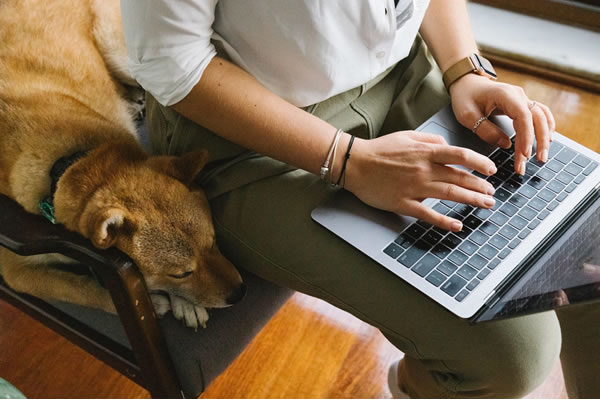Guest Post by: Jessica Brody

Downsizing happens for many reasons. Perhaps you cannot afford your current mortgage. Maybe you simply want a smaller house to maintain. Whatever the reason, the process can be tedious and challenging, especially if you have a fuzzy, furry, or fluffy pet moving with you. To ensure a smooth transition for you and your animal, follow these four steps throughout the moving process, presented by DogBlog: A Dog’s Eyes View.
1. List New Home Modifications
If you are wondering what moving tasks you need to do for your pet, you are not alone. According to one report, some state populations in the U.S. are 70% pet owners, including Idaho. This means many people have to factor in pets when downsizing.
When you’re looking at a potential new home, note what accommodations it has for your animal and what modifications are needed to create a safe and comfortable space. Maybe it has a spacious living room so you can set up an area just for your precious pooches, but perhaps the yard is not fenced in. To keep your dog safe, connect with local fencing companies to get quotes on a new fence and installation.
Before meeting contractors in person, compare online reviews for contracting companies. This provides you with a better understanding of the pros and cons of each business before you commit. Homeowners spend an average of $4,500 to install a fence; this cost can vary depending on the fence’s size, location, and materials. The last thing you want after signing a contract is to realize you could have gotten a better deal somewhere else. Be sure the installer is licensed, insured, and knowledgeable of underground utility lines.
Another possible house modification is a doggy door. If you are gone for most of the day, or you simply have an independent pet, adding a doggy door lets your pup go outside as needed.
2. Fix Pet Damage in Your Home
While pets bring joy and love into your life, they also bring more wear and tear to your home. Potential buyers will likely notice these damages, and it may dissuade them from purchasing your house. Before listing your home, fix the pet damages throughout the rooms.
Common issues caused by pets include dirty carpets, scratched floors, floorboards, and walls, unpleasant odors, and water damage. Do a thorough assessment of your home to see what needs to be updated. You might need to hire a professional depending on how severe it is.
3. Find a Safe Place for Your Pet
When moving into the new house, you might need to live somewhere else during the transition. Plan ahead, so your pet has a safe place to stay during the transition period.
If you are renting an apartment, make sure pets are allowed. If you are staying with friends or family members, ensure they make accommodations for your pet. Do not forget to compensate them for any costs they spend.
4. Introduce Your Pet to the New Home
Before moving into your new home, bring your pet for a tour so he or she can explore. This way, your animal is comfortable with the new surroundings. If you cannot do a tour before moving, walk through the home and yard with your pet first thing on move-in day.
Just as you want your kids, siblings, or parents to be protected and cozy when downsizing, you want the same for your furry family members. When you take these proactive steps, your pets will be just as excited as you are for the new home.

